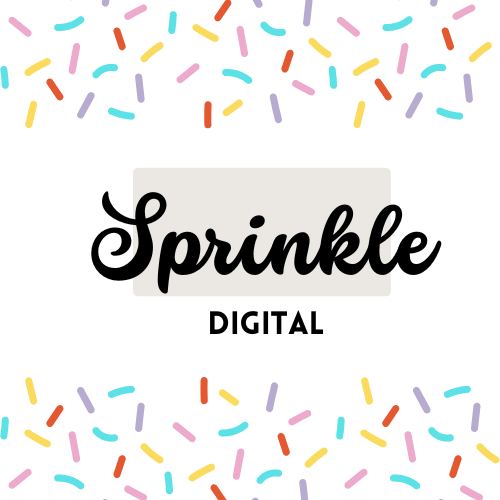When it comes to online content, there are two popular formats that often come to mind: blogs and articles. Before becoming a blogger I admit it was a little confusing for me to find the difference between a blog and article. So I don’t blame you if it’s a little fuzzy now. I’ve done a full breakdown below which should clear up any confusion and bring on some clarity.
Difference Between a Blog and Article
Definition of a Blog
A blog is a website or web page that is regularly updated, which is typically managed by an individual or a small group. The content on a blog is presented in reverse chronological order, with the most recent post being displayed first. Blogs often have a more informal and conversational tone, allowing authors to freely express their thoughts, opinions and personal experiences.
Definition of an Article
On the other hand, an article is written content that provides information, analysis or commentary on a specific topic. Unlike blogs, articles usually have a more formal and objective tone with the intention of educating or informing readers. They are commonly found in magazines, newspapers or online publications.
Characteristics of a Blog:
– Informal Tone: Blogs have a conversational style, that allows writers to connect with their audience on a personal level. This means readers feel more comfortable and the content is more friendly and approachable.
– Personal Pronouns: When it comes to blogging, personal pronouns like “I,” “we,” and “you” are commonly used. This creates a more engaging and direct experience with the reader.
– Engaging Reader: Engaging the reader is a BIG thing in blogging. So, bloggers often ask questions, encourage comments and create a dialogue with their readers for a better experience.
– Active Voice: Blogs also tend to use active voice, which makes the narrative more dynamic and engaging.
- Related: How to Start a Blog and Make Money
Characteristics of an Article:
– Formal Tone: Articles will take on a formal and professional tone. The goal is to present information objectively without any personal bias.
– Objective Language: The language used in articles is objective and relies on facts rather than emotional or subjective expressions.
– Structured Information: Articles follow a structured format with clear introductions, well defined sections and a logical flow of information. So, readers can easily navigate through the content.
– Use of Citations: Articles often include citations to support claims made and provide further resources for readers to explore a topic more deeply.
Purpose of Blogs:
– Sharing Personal Experiences: One key reason why people write blogs is to share their personal experiences, so readers connect with the writer on a deeper level.
– Building Community: Blogs contribute to community growth by encouraging discussions and creating a sense of belonging among readers who share similar interests.
– Promoting Interaction: The interactive nature of blogs motivates readers to leave comments, share their own experiences and actively engage in the online community.
– Enhancing SEO: Blogs play an important role in search engine optimization (SEO) efforts by attracting organic traffic through relevant keywords and engaging content.
Purpose of Articles:
– Providing Information: Articles are primarily focused on providing valuable information, often giving detailed explanations to educate the readers.
– Educating Readers: Articles aim to enlighten and inform. I’m talking well researched content that goes beyond personal opinions.
– Credibility and Research: Writers are expected to be credible and support their claims with reliable sources and thorough research.
Writing Style in Blogs:
– Conversational Style: Blogs typically have a conversational writing style. This creates a friendly slash cozy atmosphere with the reader.
– Keeping It Simple: Blogs use straightforward and simple language to cater to a wide audience. They don’t really use big words or have big paragraphs (so as not to overwhelm the reader).
– Use of Analogies and Metaphors: Bloggers can use analogies and metaphors in blogs to simplify complex ideas and make the content more relatable.
– Rhetorical Questions: Blogs can also use rhetorical questions to engage readers and encourage them to reflect on the content.
Writing Style in Articles:
– Formal Language: Articles use formal language to convey information objectively. It comes off very professional throughout.
– Clarity and Precision: Clarity and precision are essential in article writing, ensuring that readers grasp complex concepts without uncertainty.
– Objectivity: Most articles are objective and presenting information without personal bias or emotional influence.
– In-depth Analysis: Articles usually get into comprehensive analysis, providing readers with a thorough understanding of the topic.
SEO Considerations in Blogs:
– Keywords and Phrases: Blogs strategically incorporate relevant keywords and phrases into their content. This improves visibility in search engine results.
– Internal and External Linking: Effective blogs will use internal and external linking to enhance the user experience and establish credibility.
– Regular Updates: Keeping your blogs up to date on a regular basis can positively impact a blogger’s search engine rankings. It shows that their content is fresh and relevant, which search engines love.
– Multimedia Integration: Blogs often add images, videos and infographics into their blog posts which can increase engagement and improve SEO.
SEO Considerations in Articles:
– Relevant Keywords: Article writers will include relevant keywords that will attract a targeted audience interested in the specific topic they’re covering.
– Credible Sources: Citations from credible sources contribute to the SEO of articles, which adds reliability and trustworthiness.
– Proper Citation: Properly citing sources not only supports the content but also adds authenticity and credibility to the article.
– Comprehensive Content: Creating in depth and comprehensive articles will attract organic traffic and demonstrate to search engines the value of the information in the article.
How to Choose Between a Blog and an Article:
– Purpose of Content: Consider the purpose of your content. If sharing personal experiences, a blog may be more suitable. For informative content, an article may be better suited.
– Target Audience: Identify your target audience. Blogs cater to a broader audience seeking personal connections, while articles target readers interested in detailed information.
– Nature of Information: Determine the nature of the information you’re presenting. For casual or everyday content (like a shopping or grocery market haul), a blog is better.
– Desired Tone: The tone you choose depends on your desired outcome. If you’re aiming for a friendly and conversational tone, blogs are great for that. On the other hand, articles are more formal and professional.
Structure and Formatting
In terms of structure and formatting, blogs offer a lot more flexibility. They can vary in length, ranging from short paragraphs to more in depth posts. Bloggers will often use headings, subheadings and bullet points to break up the text (and improve readability). They will also use images, and link to videos or embed social media posts in their blog post.
On the flip side, articles tend to follow a standardized structure. They’ll typically have an introduction, body paragraphs with supporting details and a conclusion. Articles often adopt specific formats such as the inverted pyramid style where essential information is presented first followed by supporting details. While they may include subheadings and images for visual appeal, the overall formatting is still formal and consistent.
Frequency of Publication
Bloggers frequently update and publish posts. Bloggers typically publish new posts on a daily, weekly or monthly basis depending on their schedule and objectives. Bloggers have the freedom to choose how often to post.
On the flip side, articles are usually published with less frequency. This is because they require more extensive research, editing and fact checking, which can prolong the completion process. Articles are often included as part of a regular issue in magazines or newspapers or as standalone pieces on online publications.
Engagement and Interaction
Blogs typically provide readers with an opportunity to engage with the content and interact directly in the comment sections. This creates a sense of community and allows for direct interaction between the author and the readers.
On the other hand, articles don’t really have a comment sections. They are usually published on platforms that do not prioritize direct interaction between authors and readers. However, readers can still share the article on social media or engage in discussions on platforms where the article is shared.
Takeaway
So what’s the difference between a blog and article? While blogs and articles share some similarities, they still have key differences. Blogs offer a more informal approach, flexibility in content creation and opportunities for direct engagement with readers. They often adopt a conversational tone and are frequently updated.
On the other hand, articles have a more formal structure, follow standardized guidelines and have less frequent publication schedules. When making the decision between creating a blog or writing an article, consider your goals, target audience and the kind of content you wish to create. Both formats offer their own benefits and can be effective in various situations.
Ultimately, choose the format that aligns with your content and helps you accomplish your objectives.
Ready to launch your blog? Learn: How to Start a Blog and Make Money
Found this post on the difference between a blog and article helpful? Pin it now and read it again later
Save or Share!

